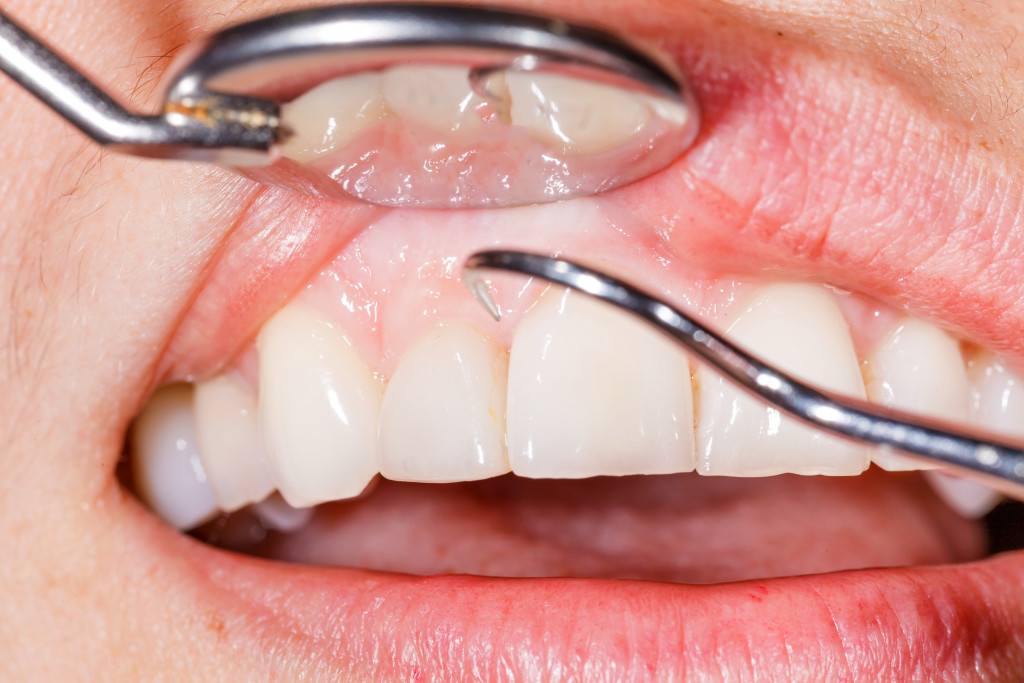Dental diseases are relatively common due to the nature of our mouths. It brings foreign bodies, bacteria, and sometimes even viruses into people’s bodies and is the first line of defense against them. Because of this, dental diseases are some of the most common diseases known to man. The most common dental diseases are cavities, tooth decay, and gum disease.
Cavities are the most common type of dental disease. It’s estimated that 90% of adults at least have one cavity in their lifetime. Cavities are caused by a build-up of plaque on the teeth. Plaque is a combination of some food particles and bacteria, both of which can be found in the saliva. When plaque is not removed, it hardens into tartar, which a dentist can only remove. If cavities are not treated, they can lead to tooth decay and tooth loss.
Tooth decay is the second most common type of dental disease. It’s technically when cavities aren’t treated and have completely infected the teeth. It’s caused by plaque build-up on the teeth, leading to tooth enamel breakdown. If tooth decay is not treated, it can lead to cavities, gum disease, and tooth loss.
Gum disease or periodontal disease is the third most common type of dental disease. It’s caused by a build-up of plaque on the teeth, leading to the inflammation of the gums. If gum disease is not treated, it can lead to tooth loss. Unlike the diseases listed above, periodontal disease is the most dangerous common dental disease, and here are various reasons why.
The Problem With Periodontal Disease
Periodontal disease is one of the most common dental diseases, affecting over 3 million Americans. The problem with periodontal disease is that it’s often asymptomatic, meaning there are no symptoms until the disease has progressed to a more severe stage.
The asymptomatic nature of the disease makes it difficult to catch in its early stages when it’s the most treatable. Unfortunately, when most people realize they have periodontal disease, it’s often too late, and the damage has been done.
As stated earlier, periodontal disease is caused by plaque build-up on the teeth, which can lead to the gums’ inflammation. The inflammation of the gums is the first sign of periodontal disease. There are many forms of periodontal disease, and gingivitis is one.

Gingivitis
In its early stages, gingivitis is the most common form of periodontal disease. Gingivitis is characterized by red, swollen, and bleeding gums. The bleeding is usually triggered by brushing or flossing. If gingivitis is not treated, it will progress to periodontitis.
Periodontitis
Periodontitis is the more severe form of periodontal disease. It’s characterized by red, swollen, bleeding gums and receding gums. Periodontitis can also cause loss of bone and tissue that support the teeth. If periodontitis is not treated, it will progress to advanced periodontitis.
Advanced Periodontitis
Advanced periodontitis is the most severe form of periodontal disease. Advanced periodontitis is quite similar to its previous version, but at this the time, the gums have lost the majority of their teeth and are very swollen and inflamed.
The Risks of Periodontal Disease
Periodontal disease is a serious dental disease that can lead to many problems if not treated. Some of the risks associated with periodontal disease include:
- Tooth loss: This is the most common complication of periodontal disease. It can lead to the gums receding and the breakdown of the bones of the teeth.
- Infection: Periodontal disease can cause infection in a few ways. The inflammation is the first sign of infection, leading to an abscess and infection. The bacteria can also enter the bloodstream and cause infection in other body parts.
- Cardiovascular disease: There is a link between periodontal disease and cardiovascular disease. The inflammation caused by periodontal disease can damage the blood vessels, leading to cardiovascular disease.
- Pregnancy complications: Periodontal disease has been linked to pre-term labor and low birth weight.
- Diabetes: Periodontal disease can make it difficult to control blood sugar levels in people with diabetes.
The good news is that periodontal disease is preventable and treatable.
Prevention and Treatment
The best way to prevent periodontal disease is to practice good oral hygiene. Good oral hygiene means brushing twice a day, flossing daily, and mouthwash.
Additionally, periodontal disease usually goes away with just proper oral hygiene during the early stages. However, if it gets worse, you’ll need a dental professional to help you out. General dental clinics such as Metro Dental can offer both periodontitis and advanced periodontitis treatment. Furthermore, they can help prevent the disease from happening in the first place.
Another way to treat periodontal disease is through surgery. There are many different types of periodontal surgery, and your dentist will choose the best one for you, depending on the severity of your case.
If you think you might have periodontal disease, it’s essential to see a dentist as soon as possible. The sooner you get treated, the better.
In short, periodontal disease is a severe dental condition that can lead to many complications. However, it is preventable and treatable. If you think you might have periodontal disease, visit your local dental clinic for an evaluation.
